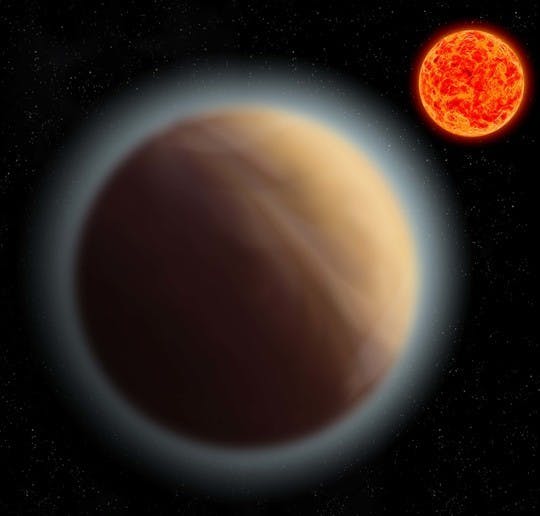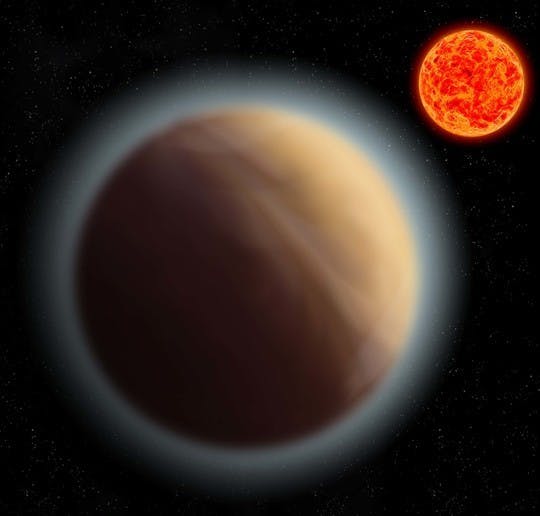If we want to discover signs of life on an exoplanet, our best option is to study its atmosphere, which is easier said than done. The exoplanets whose atmospheres have been studied so far don’t seem to have what we would consider ‘life-friendly’ conditions.
But our observatories are always improving, and now astronomers have analyzed the atmosphere of GJ-1132b, a super-earth a few times the size of our planet. This is the smallest exoplanet whose atmosphere has been studied directly.
The study, published in the Astronomical Journal, describes the detailed observations of a planet that orbits an M dwarf – one of the most common types of stars in the galaxy. It has a radius a quarter of the Sun and it’s located 39 light-years away in the Southern constellation of the Vela.
The planet appears to have a radius 1.375 times the radius of our own planet, with a much larger atmosphere, stretching for 350 kilometers (220 miles) above the surface. It orbits its star every 1.6 days.

Artist’s impression of the exoplanet GJ 1132 b, which orbits a red dwarf star. Credit: MPIA
Observations at different wavelengths in the infrared spectrum indicate that the atmosphere is opaque either from water molecules or methane. Either option would make the planet particularly human-friendly. It is likely to have a temperature of hundreds of degrees.
It is unclear what type of world GJ-1132b is. The data allows for a wide range of scenarios from a rocky Earth-like world to a hot ocean planet.
While GJ-1132b is unlikely to host life forms, this detection suggests a far-reaching consequence. M-dwarfs tend to be very active, and this activity could lead to these planets being stripped of their atmosphere, just like the Sun did with Mars.
But GJ-1132b is proof that planetary atmosphere can survive for billions of years around active stars, and while it might not be common, it suggests that suitable conditions for life might exist out there.
Reference:
